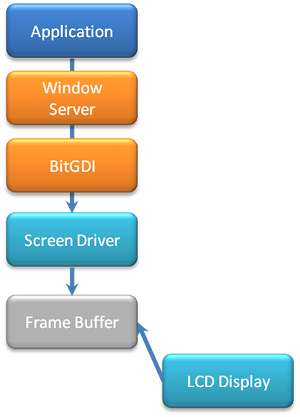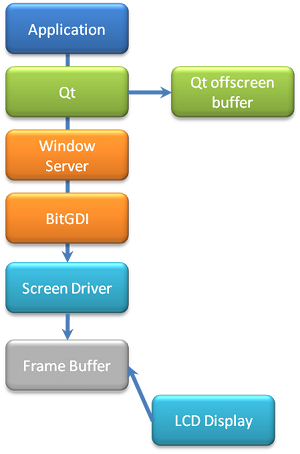Platform Notes - Symbian
As with any port, the maturity for Qt for Symbian has not yet reached the same level as other established Qt ports. This page documents the current notes for the Symbian port.
Source Compatibility
Qt for Symbian provides the same level of source compatibility guarantee as given for other platforms. That is, a program which compiles against a given version of Qt for Symbian will also compile against all future versions of the same major release.
Binary Compatibility
As with every supported platform, we will strive to maintain application behavior and binary compatibility throughout the lifetime of the Qt 4.x series. However, due to the fact that Symbian support is newly added in 4.6.0, there is a slight possibility that minor corrections to the application binary interface (ABI) might be required in 4.6.1, in order to ensure compatibility going forward. Any such change will be clearly documented in the release notes for 4.6.1.
Supported Devices
Qt is designed to work on any device which runs one of the following versions of Symbian:
| Symbian Version |
|---|
S60 3.1 |
S60 3.2 |
S60 5.0 (Symbian ^1) |
Qt has received Tier 1 testing on the following phone models:
| Phone |
|---|
Nokia 5800 |
Nokia E71 |
Nokia E72 |
Nokia N78 |
Nokia N95 |
Nokia N97 |
Samsung i8910 |
Supported Functionality
The following technologies and classes are not currently supported:
| Technology | Note |
|---|---|
Planned for future release. | |
No current plans to support this feature. | |
QtOpenGL ES | Planned for future release. |
Printing support | No current plans to support this feature. |
No current plans to support this feature. |
The following technologies have limited support:
| Technology | Note |
|---|---|
The only driver supported is SQLite. | |
Although the module itself is supported, no backend for Symbian is currently available. However, there is a backend available for Phonon. |
Known Issues
Known issues can be found by visiting the wiki page with an up-to-date list of known issues, and the list of bugs can be found by browsing the S60 component in Qt's public task tracker, located at http://bugreports.qt.nokia.com/.
For information about mixing exceptions with Symbian leaves, see Exception Safety with Symbian.
Required Capabilities
The Qt libraries are typically signed with All -TCB capabilites, but that does not mean your Qt application needs to be signed with the same capabilities to function properly. The capabilities your application needs to function properly depends on which parts of Qt you use, here is an overview:
| Module | Required Symbian Capability |
|---|---|
PowerMgmt if QProcess::kill(...) or QProcess::terminate(...) is called. | |
AllFiles when accessing specific areas. | |
NetworkServices is basically always required for this module. | |
QtMultiMedia | UserEnvironment if QAudioInput is used. |
Note that some modules rely on other modules. If your application uses QtXmlPatterns, QtWebkit or QtScript it may still require NetworkServices as these modules rely on QtNetwork to go online.
For more information see the documentation of the individual Qt classes. If a class does not mention Symbian capabilities, it requires none.
Multimedia and Phonon Support
Qt provides a backend for Qt's Phonon module, which supports video and sound playback through Symbian's Multimedia Framework, MMF.
In this release the support is experimental. Video playback may have flickering issues, and support for effects and playback queueing is incomplete.
The audio and video formats that Phonon supports depends on what support the platform provides for MMF. The emulator is known to have limited codec support.
In addition, there exists a backend for the Helix framework. However, due to it not shipping with Qt, its availability depends on the Symbian platform in use. If available, it is loaded in preference over the MMF plugin. If the Helix plugin fails to load, the MMF plugin, if present on the device, will be loaded instead.
UI Performance in devices prior to Symbian^3
Qt uses the QPainter class to perform low-level painting on widgets and other paint devices. QPainter provides functions to draw complex shapes, aligned text and pixmaps. It can also do vector path clipping, coordinate transformations and Porter-Duff composition. If the underlying graphics architecture does not support all of these operations then Qt uses the raster graphics system for rendering.
Most of the Symbian devices prior to Symbian^3 use a non-ScreenPlay graphics architecture which does not have native support for all functions provided by QPainter. In non-ScreenPlay devices Qt uses the raster graphics system by default which has a performance penalty when compared to native Symbian rendering.
In order to be able to perform all functions provided by QPainter, the raster graphics system needs to have pixel level framebuffer access. To make this possible in non-ScreenPlay devices Qt has to create an additional offscreen buffer that is the target for all Qt rendering operations. Qt renders the widget tree to the offscreen buffer and the offscreen buffer is blitted to the framebuffer via Symbian Window Server.
The following table shows the rendering stacks of native Symbian and Qt in non-ScreenPlay devices.
| Symbian | Qt |
|---|---|
|
|
The following diagrams show a simplified sequence of drawing a pixmap in a non-ScreenPlay device.
| Symbian |
|---|
|
| Qt |
|---|
|
When compared to a native Symbian application, Qt does an additional blit to the offscreen buffer before drawing to the framebuffer. That is the performance penalty which needs to be paid to get all functionality provided by QPainter in non-ScreenPlay architecture.



